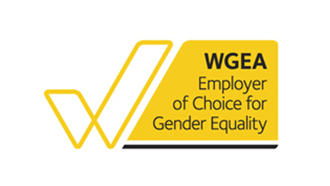- within Real Estate and Construction topic(s)
- with readers working within the Environment & Waste Management and Retail & Leisure industries
- within Technology, Media, Telecoms, IT, Entertainment, Government and Public Sector topic(s)
- with Senior Company Executives, HR and Finance and Tax Executives
Australian communities are undergoing a profound transformation, driven by the accelerating energy transition, rapid technological advancements and a deepening housing crisis. These forces are reshaping how and where we live, work and age – prompting a shift away from the traditional model of centralised cities and suburban sprawl towards more integrated, flexible and sustainable urban environments.
But as cities evolve, so too must the regulatory frameworks that underpin them. This transformation brings both opportunities and challenges for the property, development and infrastructure sectors, with significant implications for how we plan, develop and invest in Australia's future.
It is beyond dispute that our future cities will, to some degree or another, be augmented around the 'live, work, play' and 'age in place' model, meaning some inevitable disaggregation of the traditional model of housing in suburbs and primary places of employment in cities.
The imperative to decarbonise and enhance environmental sustainability, combined with the rise of hybrid work and the strong desire of Australians to retain flexible working means that while central business districts are no longer the vital hubs they once were, our future suburbs will look very different to those of the past. This shift will also reshape demand for – and the way in which we use – supporting road, rail, energy and other infrastructure.
This reality is already having, and will continue to have, significant implications for Australia's regulatory framework, particularly our planning laws, construction regulations and project delivery arrangements, infrastructure investment decisions, financing, tax laws and foreign investment approvals.
Housing supply, affordability and the rising costs of delivering new housing are all issues that are dominating current headlines. The National Housing Accord (Housing Accord) – which was agreed upon by the Australian Government, states and territories, institutional investors and the construction sector in October 2022, and later updated in August 2023 to increase the target to 1.2 million well-located new homes over five years from 1 July 2024 – as well as the need to open up opportunities to expedite delivery of affordable housing has seen a significant shift in how we deliver housing. Various levers are being pulled to facilitate the delivery of more cost-effective housing including, social housing, community housing, key worker housing, manufactured home estates, co-living facilities and build to rent housing.
This has prompted a range of regulatory changes across multiple areas of law, many of which have been responsive to these developments and some of which have pre-empted or facilitated these societal changes. At the same time, it has also highlighted a number of regulatory constraints that operate as barriers to the development of alternative housing options and typologies. Significant opportunities exist for those who capitalise on or drive these initiatives, along with powerful brand advantages in being seen to be at the forefront of shaping the vision of our future cities.
Planning and sustainability considerations
The merging of family life, work life, retirement and aged care living means traditional zoning controls, such as 'residential' and 'employment lands' need to be far more agile to accommodate shifts in demand and mixed land uses. This will also necessitate re-envisioning the integration of diversity and inclusion, climate adaptation and care for country in design. Establishing communities that are set up this way will in turn reduce demand on certain types of transport infrastructure.
Simultaneously, Australia is facing a demographic shift in our city areas as the cost of housing soars. Despite the Housing Accord, rezoning and up-zoning of various landholdings, and cutting of red tape, cost effective housing delivery remains a vexed issue. We have already seen a shift away from the great Australian dream of land ownership as interest in land lease and build to rent increasingly looks like the way of the future for housing security.
The delivery of expedited housing options can be facilitated by the identification of opportunities to cut red tape, including by:
- replacing requirements for development consents with
certifications for more types of development in specified areas
(which can be offset by increased development control order powers
where necessary);
- simplifying current certifications;
- more readily facilitating temporary or permanent private
infrastructure provisioning;
- relaxing zoning controls; and
- encouraging land owner collaboration around fragmented land holdings that are well positioned to deliver innovative new sustainable communities, and that leverage advancements in renewable energy and digitalisation.
Infrastructure provisioning to support uplifts in density and new greenfields release areas remains a major constraint. The process of forward funding of infrastructure – particularly where multi-stakeholder cooperation between local and State government agencies is required – is often slow and rarely coordinated. Reliance on developers to forward fund this infrastructure is haphazard, complex to negotiate and frequently contingent on specific development outcomes.
It is for this reason that future cities will need to explore new models of infrastructure delivery, including possible privatisation of various essential services such as sewer, water, energy and waste. These models may be attractive to traditional infrastructure investors such as domestic and international superannuation funds.
Organisations that take an innovative, strategic approach to master planning large tracts of land or re-imagining urban renewal and service delivery, keeping the above considerations in mind, should be strongly supported by government as key partners in strategic plans for our future cities.
Real estate considerations
We are seeing an increasing number of innovative models and structures for delivering social and affordable housing as standalone developments or as part of the housing mix for private housing projects. Some of these leverage off the Housing Australia Future Fund (HAFF), and state-based low or interest free loans. Others involve partnering with a community housing provider (CHP) to access those streams of funding and the tax status of those entities to make projects financially viable.
When the Housing Accord was agreed in 2022, superannuation funds were called on as the 'white knight' to invest in housing and in particular affordable housing. Few have been able to satisfy themselves that their fiduciary duties to members can be met, citing that financial returns are not yet comparable with traditional superannuation investments. There remains strong interest in Australia from other sources of international and domestic capital, but the emerging asset classes within housing are being approached with caution due to a lack of track record and certainty on returns and exit strategy.
Residential tenancy laws vary across Australian jurisdictions but are generally weighted towards consumer protection, including strict eviction laws, rules around rent increases, minimum tenure, landlord obligations and tenant rights. The growth of rental accommodation and institutional investment from sophisticated landlords, has exposed challenges in establishing operating models that comply with residential tenancy laws in each jurisdiction while maintaining the operational efficiency and profitability.
Given this, there is growing interest in land lease communities, where residents lease the land from the community owner/manager and place a relocatable home on it – offering owners both a reoccurring rental income and an upfront sale of a home. However, regulatory and tax frameworks differ across states and territories, creating complexity in fitting land leases into existing legislative regimes. Despite these challenges, major institutional investors are active participants in the sector, with the recent IPO of GemLife in July 2025 a sign of strong investor appetite in this asset class.
Similar considerations arise with co-living dwellings and developments which are generally treated as boarding houses, rooming houses or residential tenancy agreements depending on the jurisdiction. Legislation has not caught up to categorise co-living as serviced apartments or hotels, which provide operators with materially more operational flexibility and attract institutional capital.
Investors are also deciding what to do with B and C-grade office buildings that are quickly becoming redundant in terms of functionality and environmental footprint. There is interest from state governments and local councils to convert these buildings to residential as they increase density and housing supply in well-established areas and lock in the benefits of retaining embodied carbon. While incentives such as planning uplifts, land tax and rates holidays, and even subsidies can help, their effectiveness ultimately depends on private sector delivery. Key challenges include the suitability of the building's floorplan and overall design, access to natural light and ventilation, uncertain refurbishment costs and the complexity of undertaking major works within an existing structure.
Office upgrades or conversions to hotels or serviced apartments may be a more viable option for some – a notable example being the MLC Tower in North Sydney, which is slated for a major conversion to educational use. Not all owners of these office buildings have the capital or expertise to execute a conversion or major office refurbishment, so they are left with the choice of holding assets that are not meeting return hurdles or selling below book value.
Construction and infrastructure delivery considerations
The escalated cost of construction materials and labour remains a core limiting factor to an increase in housing supply and infrastructure delivery. A confluence of inflationary pressures, global geopolitical instability, evolving US tariff regimes and domestic industrial relations policy has created a highly challenging environment – significantly raising the cost of construction and contributing to substantial project delays.
Governments are aware of this and are acting on a number of fronts, including:
- reviewing building regulations to facilitate off-site
manufactured modular homes and apartments;
- funding a voluntary certification scheme to help facilitate the
approval of prefabricated housing under the National Construction
Code;
- encouraging banks, superannuation funds and other institutional
investors to work with industry to address barriers to financing
prefabricated housing at scale; and
- taking steps to achieve national consistency in occupational licensing to allow skilled workers to move more freely across jurisdictions, helping to alleviate labour shortages and improve flexibility.
Tax considerations
Many proponents of investment in social and affordable housing, and infrastructure projects generally, may look to the tax system to ensure adequate policy settings are in place to encourage investment. However, various competing priorities exist (and are likely to continue) within government, particularly in relation to any project involving cross-border investment.
Commonwealth and State taxation laws include concessions for investment in social and affordable housing, however tax exemptions are principally available to domestic non-profit charitable or benevolent bodies that pursue such projects for the purpose of relieving poverty, distress or helplessness in the community.
As such, social and affordable housing investment structures will often involve non-profit entities such as community housing providers in partnership with, or receiving funding from, for-profit developers or financiers by various means. The Commonwealth Government has also introduced a reduction of managed investment trust withholding tax rates in relation to certain build-to-rent projects, however we are yet to see whether such measures will significantly attract inbound investment, given the narrow scope of those measures.
This is unfolding against a backdrop of heightened scrutiny from legislators and the ATO on cross-border arrangements – potentially deterring, capital investment in large-scale, city-shaping projects. Recent measures such as new thin capitalisation rules, more restrictive transfer pricing rules, reduced capital gains exemptions for foreign investors, increased reporting obligations, and Australia's comparatively high statutory tax rate all contribute to this challenge. While broader structural tax reform is widely acknowledged as necessary to address the issues of the future, it has proven hard to for governments to achieve.
As Australia's cities continue to evolve, it's essential that regulatory frameworks adapt to meet emerging social and economic needs – enabling sustainable, future-focused development.
The content of this article is intended to provide a general guide to the subject matter. Specialist advice should be sought about your specific circumstances.
 |
 |
| Lawyers Weekly
Law firm of the year
2021 |
Employer of Choice for Gender Equality
(WGEA) |




